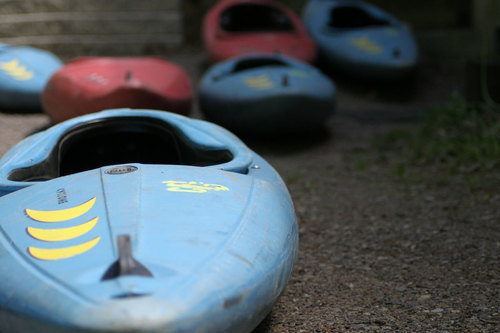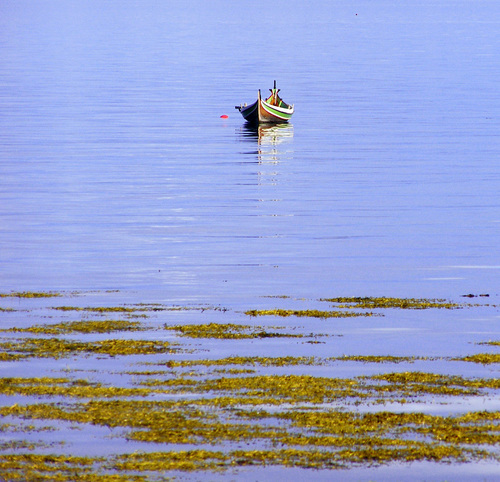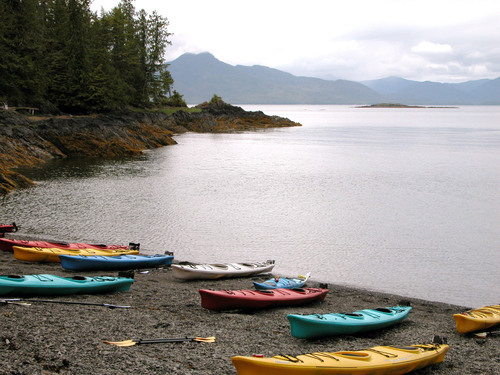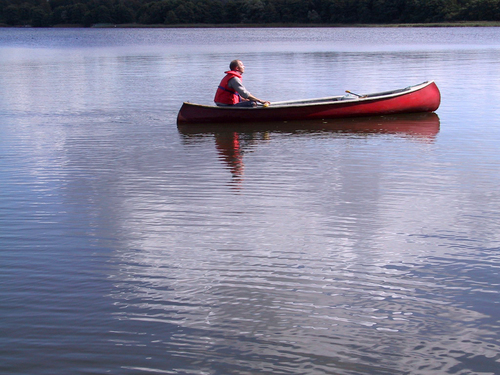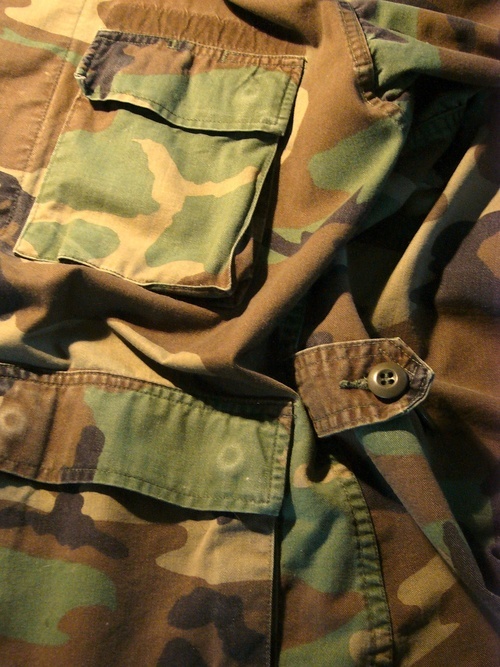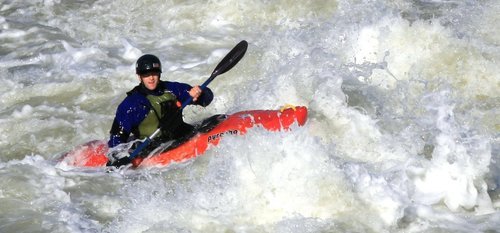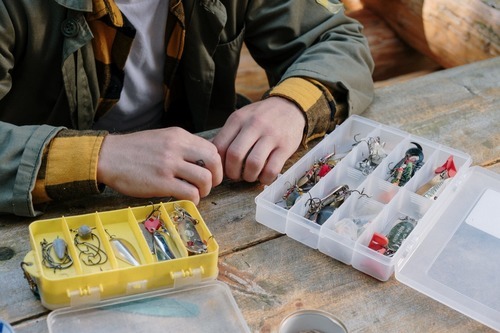20th Century Kayaks
The kayaks created by Johannes Klepper continued to be popular into the early 1900s. Today it is straightforward to get into water sports due to the affordability of kayaks. However, before the industry took off, prices were much higher. This changed during the 1920s, when the mass production of kayaks increased. Around half a million of them were in use in Europe.
In 1928, a German called Franz Romer attached a sail to his kayak and travelled from Las Palmas to the US Virgin Islands in 58 days. This was a distance of 2,730 nautical miles. It helped to popularise kayaks even more.
By 1940, these vessels were used competitively by people in the United States. The National Whitewater Championship was established in Maine. During the debut tournament, a large number of boats were wrecked. The winner crossed the finish line while clinging to their overturned kayak.
In the 1930s, fibreglass began to be developed. It was mixed with resin and proved a critical invention for cheap manufacturing. The material soon became popular with kayak makers. In the 1960s, the US. Kayak Slalom World Champion Walter Kirschbaum used a fibreglass vessel to travel through the waters of the Grand Canyon.
Early Kayaks
People all over the world enjoy kayaks today. Riding in these vessels is often considered a relatively modern recreational activity. However, readers may be surprised by the rich history of kayaking. The Inuits are believed to have first developed these types of boats. They were mainly utilised for hunting in lakes, rivers and the sea. Animal skins and whale-bone skeleton frames were vital materials in the construction of early kayaks. Historians tend to believe that they are at least 4,000 years old. However, the oldest existing kayak dates back to the 1500s.
Several Native American tribes are known to have built early kayaks. They often had a design that contained two or three cockpits. This was in order to transport goods and passengers. Sites such as the Guardian contain news stories about the preservation of Native American artefacts. However, there is little written documentation about these vehicles. Tribes would instead pass down their kayak building experience to future generations orally.
The Aleut people of Greenland heavily relied on kayaks in order to hunt seals, whales and caribou. Animal skin was preferred as a covering due to the fact that it glided smoothly in the water.
Contemporary kayaks often have their design origins in the ones created by the native people of Alaska. Wooden frames would be covered in certain fabrics. Johannes Klepper was a businessman who took these design concepts and mass-produced kayaks for European customers. His products had collapsible frames and utilised waterproof rubber to prevent leaks.
Kayak Types
When someone is choosing which kayak to buy, they undoubtedly need to take its purpose into account. Over the years, a number of specialist types have been developed. They tend to be categorised based on their application. For example, sea and touring options are focused on stability in rough water conditions. Racing kayaks naturally prioritise speed above everything else. The ones made for fishing will need to have attachments for rods and other gear.
Recently newer types have been created. For example, disabled athletes might utilise para-canoes in specialist competitions. These vehicles will take the unique needs of the rider into account. This shows just how versatile kayaks can be.
Broadly speaking, these vessels have two distinct types. Sit-in ones have a space inside for the rider to fit themselves into. Sit-on-top kayaks are inspired by paddleboards. They have footrests and backrests on the outside of the hull. They closely resemble surfboards in their design.
In the future, it seems likely that newer hybrids will be created. Kayaks have a plethora of uses. More affordable and innovative manufacturing processes have led to the invention of exciting kayak types.
Kayak Materials
The material that a kayak is made from will dictate its weight and durability. A lot of people prefer it when these vessels are made from fibreglass. This is due to the fact that the hull will be stiffer compared to polyethene. However, if the kayak hits something, it will be more prone to cracking. News sites such as Sky regularly report on professional kayak tournaments. The vehicles in these competitions are often made from a lightweight material such as fibreglass.
If people are not concerned about the weight, they may choose one made using a plastic resin. These are popular because they are more resistant to impact. Recently, inflatable kayaks have become more popular. This is due to the ease of storing and transporting them. They can be made from Hypalon or PVC. The latter is a cheaper option.
People seeking something with a more classic look could purchase a wooden kayak instead. The hulls are usually solid and can be coated in an epoxy resin. The type of wood can vary. Plywood, thuja, pine and redwood are popular choices. Generally speaking, higher quality wood will be more expensive.
Kayak Materials
The material that a kayak is made from will dictate its weight and durability. A lot of people prefer it when these vessels are made from fibreglass. This is due to the fact that the hull will be stiffer compared to polyethene. However, if the kayak hits something, it will be more prone to cracking. News sites such as Sky regularly report on professional kayak tournaments. The vehicles in these competitions are often made from a lightweight material such as fibreglass.
If people are not concerned about the weight, they may choose one made using a plastic resin. These are popular because they are more resistant to impact. Recently, inflatable kayaks have become more popular. This is due to the ease of storing and transporting them. They can be made from Hypalon or PVC. The latter is a cheaper option.
People seeking something with a more classic look could purchase a wooden kayak instead. The hulls are usually solid and can be coated in an epoxy resin. The type of wood can vary. Plywood, thuja, pine and redwood are popular choices. Generally speaking, higher quality wood will be more expensive.
Military Kayaks
While kayaks are predominately utilised for recreation, they also have more serious uses. Over the years, these vehicles have been adopted by the military. Several organisations noticed their potential during World War Two. This included the Royal Marines Boom Patrol Detachment, British Commandos and Combined Operations Pilotage Parties. Kayaks were ideal for covert operations due to their compact size and silent nature. During WWII, the harbour of Bordeaux was raided in an event known as Operation Frankton. The commandos entered the coast via unique military kayaks.
Aside from actual combat, several armies have recognised the importance of kayaks for gaining reconnaissance. An excellent example of this is the Falklands War when these vessels allowed scouts to move silently past enemy patrols. The US Navy SEALs are reported to have utilised them for operations within Somalia in the early 1990s.
Over the years, several kayak models have been created specifically for military use. A unit of the UK Royal Navy called the Special Boat Service has its own two-person folding kayak revered for its mobility. This model is notable because it can be launched from a surfaced submarine. It is even possible for divers to exit a submerged sub while carrying a kayak and bring it up to the surface.
Kayaks are so versatile that paratroopers have been known to use them. The vessel may be dropped into the sea or held by the parachutist as they jump from the aircraft. Several branches of the US armed forces favour this method. However, Australia appears to be the country that has utilised kayaks the most for military operations. It was a key vehicle for them during the 1941 to 1945 Pacific War.
Kayak Safety
Kayaking is enjoyable, but with its exciting nature comes several potential hazards. It is vital that all kayakers know how to stay safe while out on the water. Every year the RNLI is called out to rescue people in these vessels.
Over the decades, there have been numerous tragic stories about kayak accidents. Readers can check out the BBC website to learn about specific cases. Many of them were caused by capsizing. The weather and tides can change dramatically in very little time. Consequently, people have to know the conditions before they launch their craft.
There are some types of kayaking that are more dangerous than others. A good example is white water rafting, which should only be undertaken by those with a high skill level. River difficulty is usually expressed on a scale from 1 to 6. 1 is used for areas that only have a small number of rough patches. Meanwhile, 6 denotes a genuine risk of death or injury. Therefore, it is essential that kayakers know the difficulty level of the body of water they want to travel through.
It might seem obvious but everyone operating a kayak has to wear a life jacket. If the vessel suddenly capsizes, a flotation device will increase the chances of the person’s survival. Those not wearing one will need to manually stay afloat until help arrives. Doing so will waste valuable energy, and the possibility of drowning can become more real.
Each kayaker brings a kit with them. It can contain a plethora of valuable items. Compasses are essential for navigation. There should be an appropriate amount of water available so that dehydration is prevented. The RNLI recommends that kayakers also bring a phone with them. Doing so will allow them to call the emergency services if they get into trouble. It is wise to keep the device in a waterproof pouch so that it does not get damaged.
While there are many ways to increase safety, the most important thing is to be well trained. Novices can take courses on how to properly utilise a kayak. Education allows them to better identify any potential hazards while out on the water. Kayakers should only launch into bodies of water that are appropriate for their skill level.
Kayak Fishing
Kayaks are ideal vessels for people who want to engage in fishing. Modern kayaks have very high traverse stability, which reduces the risks of capsizing. As a result, fishermen can travel further out to deep water, where their catch will be. Due to the small size of these boats, only one or two people tend to fit in them. However, it is possible for groups of kayakers to head into the water together.
While on a boat, fishing entails utilising a number of techniques. Readers can use Wikipedia to learn about these in detail. There is not much difference between fishing from a large boat or a kayak. In essence, they are the same. However, the pieces of equipment may have to be attached to the smaller kayaks in a slightly different fashion.
Since kayak fishing is so popular many of these vessels are manufactured with the necessary accessories. This includes rod holders, bait containers and anchor trolleys. Anglers will tend to seek out well-known game fish such as marlin, halibut, drum, snook, seatrout and tarpon. Others may prefer species that are revered for their taste. Good examples are tuna, cod and mackerel.
In the past, most people believed that boats needed to move at high speeds for trawling to be effective. As a result, kayaks were seen as an ineffective method. However, it is perfectly possible to snag fish even at paddling speed. When this was discovered, the popularity of kayak fishing soared.
Soft baiting is another way to attain a catch. The person will need to utilise soft lures and weighted jigheads. The lures tend to be in the shape of bait. Fishermen in the Southern hemisphere are more likely to engage in soft baiting because it negates having to use messy live bait instead.
If the person wants to fish very far out to sea, then they are unlikely to launch their kayak from the shore. Instead, the vessel can be stored on a larger boat. Once the vehicle reaches a certain point, the person will get on their kayak and seek out game fish. This is the ideal method for those wanting more excitement as the fish can end up dragging the kayak through the water.
In recent years freshwater areas have been seen as excellent locations for this type of fishing. Species such as largemouth bass, salmon, muskellunge and trout reside in these waters.
Kayak Fishing
Kayaks are ideal vessels for people who want to engage in fishing. Modern kayaks have very high traverse stability, which reduces the risks of capsizing. As a result, fishermen can travel further out to deep water, where their catch will be. Due to the small size of these boats, only one or two people tend to fit in them. However, it is possible for groups of kayakers to head into the water together.
While on a boat, fishing entails utilising a number of techniques. Readers can use Wikipedia to learn about these in detail. There is not much difference between fishing from a large boat or a kayak. In essence, they are the same. However, the pieces of equipment may have to be attached to the smaller kayaks in a slightly different fashion.
Since kayak fishing is so popular many of these vessels are manufactured with the necessary accessories. This includes rod holders, bait containers and anchor trolleys. Anglers will tend to seek out well-known game fish such as marlin, halibut, drum, snook, seatrout and tarpon. Others may prefer species that are revered for their taste. Good examples are tuna, cod and mackerel.
In the past, most people believed that boats needed to move at high speeds for trawling to be effective. As a result, kayaks were seen as an ineffective method. However, it is perfectly possible to snag fish even at paddling speed. When this was discovered, the popularity of kayak fishing soared.
Soft baiting is another way to attain a catch. The person will need to utilise soft lures and weighted jigheads. The lures tend to be in the shape of bait. Fishermen in the Southern hemisphere are more likely to engage in soft baiting because it negates having to use messy live bait instead.
If the person wants to fish very far out to sea, then they are unlikely to launch their kayak from the shore. Instead, the vessel can be stored on a larger boat. Once the vehicle reaches a certain point, the person will get on their kayak and seek out game fish. This is the ideal method for those wanting more excitement as the fish can end up dragging the kayak through the water.
In recent years freshwater areas have been seen as excellent locations for this type of fishing. Species such as largemouth bass, salmon, muskellunge and trout reside in these waters.

